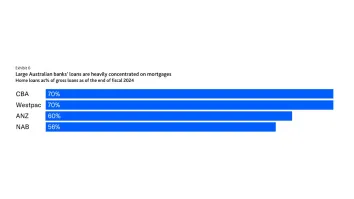Digital transformation: Digital framework in banking
By Eiichiro YanagawaIn the banking sector, we take a broad view of digital—one that transcends new apps and the deployment of new and different channels. Moreover, we believe that digital is making it imperative for financial institutions to review and transform their organisational structures to ensure success and survival.
There are four essential qualities that companies should consider in relation to this framework. They are:
1. Brand experience: Customizing the brand experience of financial institutions to individual customer needs, whilst ensuring consistency and uniformity across all channels and points of interaction.
2. New capabilities: These will be rooted in a foundation of analytics and automation.
3. Business model: Operating model, namely change and innovation in products and services, organisation, culture, skills, and IT.
4. Goal: Providing both demonstrable and sustainable economic value.
Brand experience: Channels offering a consistent customer experience
Brand experience is the first layer of our proposed framework.
Digital in banking refers to maintaining consistency across all channels, whilst customizing the brand experience to best suit the needs of individual customers. In other words, digital at its most basic level can be boiled down to a question of how banks interact and engage with customers.
Financial institutions no longer exist in the analog era of banking where success can be achieved with simple financial products that hinge on the three variables of interest, duration, and amount of funds. Today’s digital banks must strive for a unique brand message, such as superior service or customer value, and offer a consistent brand experience to customers at every opportunity and each point of contact.
This does not mean that banks should offer an identical experience for all situations or that every channel must have the same functionality. Offering the same cookie-cutter product services across different channels will not lead to success. Instead, banks must convey consistent values and experience, leaving customers with an impression of a bank brand, not that of a banking channel.
Old approaches and points remain relevant when it comes to channel optimisation.
A. Optimizing each channel
– Do you have the right number of branches and the right locations? What is your vision for your branches? For instance, you might be aiming for a hub-and-spoke model with several flagship branch offices surrounded by smaller satellite offices.
– Are the locations of your ATMs appropriate? Is the quantity appropriate? Is it possible to improve customer service and the bank’s performance by upgrading certain ATMs (installing video teller or currency exchange units)?
– What should be the characteristics, features, and functions of online banking and mobile banking? What is the optimal platform for offering digital banking services?
B. Optimizing the overall channel system to provide customer experience via omnichannel
– Make it possible for customers to move seamlessly between channels. For example, make it unnecessary to reenter data or repeat a saved or completed application process when resuming use of an app or speaking with a teller.
– Even though channels differ and require customers to interact in different ways (for example, a mobile channel versus at a branch), financial institutions should provide a consistent customer experience by sharing customer information across all channels.
– Establish mutually reinforcing channels. Use digital banking technology in face-to-face channels such as live chatting on mobile apps or at an automated kiosk unit inside a branch. Doing so will prove an essential digital component in banking.
C. Ecosystem creation and partnering with nonbank channels
– A digital bank must take a proactive stance to maintain good relationships with customers. Offer customers what they need, when they need it. Create or join an ecosystem that includes financial services that is in close proximity to customers.
– Make it possible for a customer to be able to use a banking service from a third party channel through open (or collaborative) APIs.
– Give customers the option to use third party products and services (on a limited or open basis) through financial institution channels.
In the context of Asia’s financial industry the following challenges demand immediate discussion and action:
• Defining the desired definition and vision of omnichannel and discussions about a firm’s capabilities.
• Designing products and services that maximise channel capabilities (or are otherwise premised on the expectations that customers have toward a channel) whilst also bearing in mind that online banking is not a substitute for real-world branches or ATMs.
• Exploring case studies of cutting-edge initiatives in retail, sales, and telecommunications cases, and studying potential for collaboration.
Banks should invest flexibly so that customers can freely choose the channel and features they prefer to use. The digital behavior of customers is in the throes of drastic change. Financial institutions need to remain careful not to be deterred or lazy in their efforts to push the evolution from online banking to digital banking simply because customers are conservative and reticent when it comes to online financial transactions. Customer behaviors will eventually change, and in that instant they will choose a financial institution, and the bank they choose will become the digital winner. Moreover, technology already exists that can be used now to lead this change.
New capabilities: Analytics and automation
Analytics and automation make up the second layer of our proposed framework. This refers to new abilities that banks should put in place that enable modernisation and digitisation. This layer is the engine that connects the first layer, namely consistent channels and customer experience, with the third layer of new business models, or changes in products, services, organisations, culture, skills, and IT. Discussions on analytics should focus on what analytics means in the context of digital or modernisation. We believe analytics play a crucial role in optimizing the delivery of a bank brand experience in real time to each customer, based on a wide variety of data from myriad sources.
Analytics
Amongst those at the vanguard of the market, there is already a decoupling (or modularisation) evident amongst three areas of services when it comes to Internet of Things (IoT) data: 1) transmitting; 2) storing, analyzing, and selling; and 3) data use or application. Fintech initiatives are already spawning new service businesses in these three areas.
We believe that the key to success will lie in what might be regarded as information-based services and will hinge on storing, analyzing, and selling IoT data. A time will come when an individual’s driving history and personal health record are referenced using IoT data when they buy insurance, just as an individual’s credit history is used when they apply for a credit card or a loan.
The enduring impact of big data, analytics, and AI will be far more profound and broader than the information system or data warehouse debate that has taken place so far. This is, in part, because the goal of these efforts will greatly transcend the automation and rationalisation of bank office operations; instead, they will result in banks offering new financial services and customer experiences.
Automation
Like analytics, automation is not a new concept for banks. Over time, financial institutions have tried to mechanise and automate operations using computers. Since the 1960s, banks have consistently strived to minimise the human component of work through a focus on automation in back office operations and straight-through processing (STP), seeking heightened efficiency and accuracy with an eye to cutting costs. The importance of reducing costs through enhanced efficiency remains, and banks still have challenges that they must address to meet their STP objectives.
At the same time, however, the focus of automation has moved from the back office to the front office and now encompasses customer engagement; similarly, the focus of mechanisation is shifting from a mundane automation (to replace human labor) to more advanced and sophisticated iterations (to replace human intelligence). Advanced, smart automation initial use cases are manifesting in various ways, including self-learning automation to enable natural conversation, research automation, and algorithm-based automation that directs or advises customers (robo advisors).
This new automation changes the target of modernisation and digitisation as well as the approach. Until now, automation generally meant replacing human labor with machines without altering work processes. Automation followed in line with known methodological approaches and replaced existing targets. Consequently, this often led to recreating preexisting legacy issues. In contrast, this new automation fundamentally changes the game — namely, by changing methodological approaches and targets.
This new automation will ultimately evolve from a more slippery image of the functionality that firms would like to possess — wouldn’t-that-be-nice features, so to speak — to more concrete resources and knowhow that should certainly be put in place. In the fields of customer response and risk management, a roadmap to modernisation will continue to be crucial to realizing the promise of new automation. Piecemeal, stopgap measures to cope with the imminent flood of digital are reaching the limits of their effectiveness, and fundamental change in the form of new automation is required.
Business model
The third layer of the digital discussion is the operating model that companies should strive to realise.
Digital will mandate modernisation. The desired customer experience in a digital world cannot be supplied without changing the business model as it pertains to products, services, the organisation, and technology.
Products and services
When it comes to change and even innovation in products and services, not only is the product content (the what) important, so is the development approach (the how).
• Providing new products and services (the what) that harness digital technology:
– Financial institutions must consider innovative product offerings made possible by banks and things digital, namely innovation in payments such as digital wallet technology, direct payment to merchants from bank accounts, credit card accounts linked to retailers, manufacturers’ offers, and rewards.
– Digital native companies such as Moven, Simple, and Fidor have dramatically reinvented the relationship between customers and financial service providers, including banks.
• New initiatives in digital product services development (the how):
– There are a number of good examples — from inviting customers to generate and share novel ideas and rapidly testing new product ideas to allowing customers to self-design products with the features they most desire.
– Megabanks in Europe proactively build relationships with customers via social media and design programs that ask customers to offer ideas on how to strengthen a bank’s digital channel.
– Bank-operated app stores have emerged, and some banks have offered an environment where clients and developers can collaborate to design financial apps using open bank APIs.
• Establishing partnerships (the how) with external entities:
– It has become common for banks today to realise the need for partnerships and to forge them. Banks invest in or buy emerging companies or external entities that offer neo-financial services in fields outside banks’ service areas as a means of altering business models and offering services in new areas.
– European banks such as Lloyds Bank, Santander Bank, and the Royal Bank of Scotland (RBS) have forged partnerships with external players in fields such as mobile point of sale (mPOS), crowdfunding, and peer-to-peer (P2P) lending. Similar notable and related examples include Barclays Accelerator project, Santander’s Innoventures fund, and the buyout of US-based online-only bank Simple by Banco Bilbao Vizcaya Argentaria (BBVA).
– These are real-world examples of what buzzwords such as fintech, insurtech, and regtech represent in the context of a bank’s drive to modernise; they are fundamentally different in nature from conventional mergers and acquisitions.
Organisation and technology
Transformation of operating models should spur change in IT organisations and IT delivery and provision.
Our increasingly digital world is posing major challenges to banking IT. Banks that are effectively paralyzed due to antiquated, siloed legacy platforms are struggling to maintain the agility that digital demands.
CIOs grappling with modernisation face five common challenges:
1. Making the business case a reality.
2. Establishing IT and business strategy challenge priorities.
3. Training sales staff to better provide digital services.
4. Pressure to cut costs and securing new financial sources.
5. Overcoming constraints imposed by legacy systems.
To address these challenges, we propose setting up two IT teams — what we refer to as two-speed IT — to best handle the requisite tasks.
• A unit responsible for legacy maintenance management and optimisation.
• A unit dedicated to digitisation and achieving increased agility in operations.
Fortunately, major Japanese financial institutions are successfully transforming their organisations with this approach and proceeding to the subsequent challenge. The challenge posed is a metaphorical organisational wall dividing IT and business units. IT is at heart a mirror that reflects business processes. This includes the inevitable changes in IT-related initiatives and ownership away from business units to IT units. When it comes to enhancing effectiveness, not only is the communication between two different IT teams important, but so is the positional relationship and perceived distance between stakeholders relevant to the two organisations.
Goal: Providing economic value
Last comes the fourth layer and ultimate objective: fostering economic value.
Digital innovation must be something that will bring about demonstrable and sustainable economic value for banks. Frequently, financial institutions tend to initiate digital transformation programs without a clear plan or view of how their efforts will be converted into economic value.
Relatively ambiguous ideas that are difficult to formulate into a business case, such as improving customer relationships with digital or combating competition from other institutions, are being used as a basis for digital investment.
As with legacy modernisation, digital initiatives and strategic investments without a business case make quantification problematic, creating difficulty in budgeting and sustainability in terms of investment.
Measure performance
It goes without saying that it is important to enhance customer engagement and competitiveness; however, the question of how to measure performance remains. In order to justify the scale and frequency of investment in digital initiatives, we believe that performance needs to be gauged from the following three perspectives:
1. Increasing revenue: Driven by factors including maintaining and generating customers, increasing usage, creating new products, and optimizing prices.
2. Reducing risks and costs: Characterised by reducing credit losses, reducing fraud, optimizing liquidity, managing operational risks, and executing risks.
3. Reducing operational costs: Driven by factors including rethinking branch office networks, reducing transaction costs and service-provision costs, and streamlining regulatory reporting.
Modifying organisational mechanisms
In addition, an initiative-based system that transcends corporate units or divisions is important for major banks. We advocate modifying organisational mechanisms by drawing on the following three viewpoints:
• Analysis of a broad array of factors and mechanisms to make massive organisations function effectively.
• Design mechanisms to facilitate the digital transformation effectively for massive organisations and support the diversification of these mechanisms.
• Establish order or discipline and causal relationships for massive and divergent group organisations to cooperate effectively.
Megabanks are already realizing that a shift to digital is an imperative for reasons that go beyond improving return on investment (ROI). At the same time, because major banks have abundant resources, it is vital that they carefully plan, implement, control, and revise strategy assessments and implementation mechanisms.




















 Advertise
Advertise










